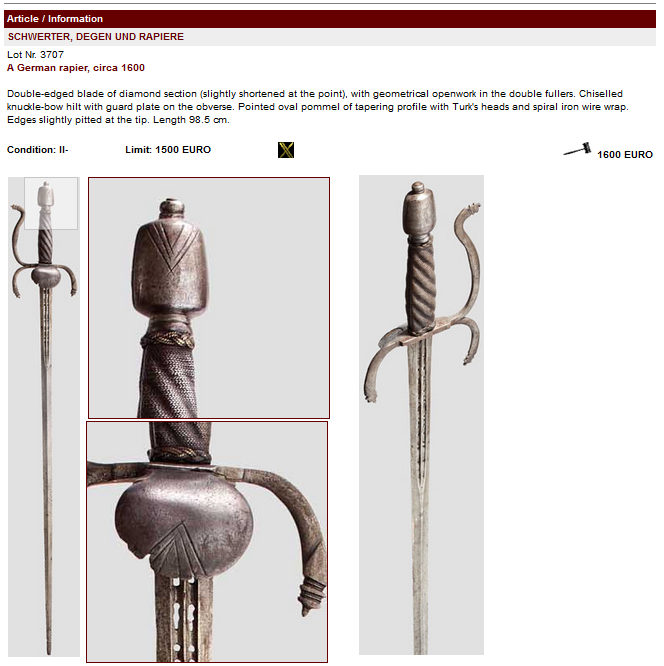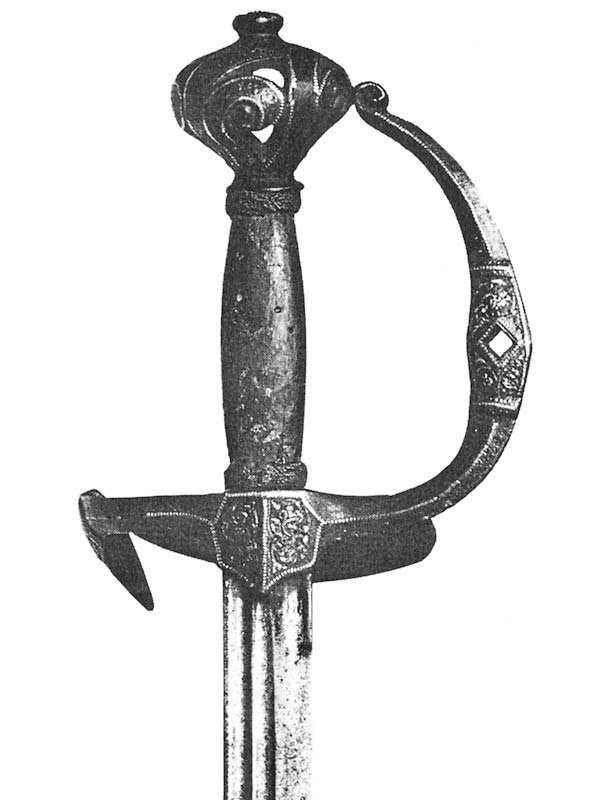Of course, there are cavalry swords and "side-swords" from that period, with similarly simple designs, but I believe this one is none of them (blade is rather for thrusting, not cutting). So far I have only heard of and seen two other similar simple forms - cross-hilted swords popular in England around that period (http://www.myArmoury.com/feature_engswords.html) and some crab-hilted swords from Italy, which had only a side-ring, just like on a parrying dagger. (plus "pillow swords" which came somewhat later).
Of course, this particular rapier could be a composite piece put together from different parts much later by "conservators" (but it´s not indicated in the description, even though the weapon has been modified at some later stage - re. shortened blade), or just an odd, unique piece. What do you think? Have you seen similar rapiers elsewhere? I´m interested in weapons intended mainly for thrusting, from 1590s-1610s, with very simple hilt designs. Thanks in advance for any further info.


